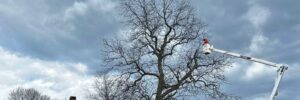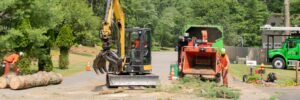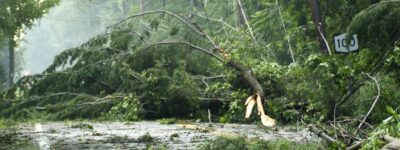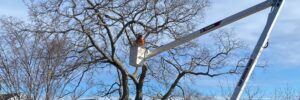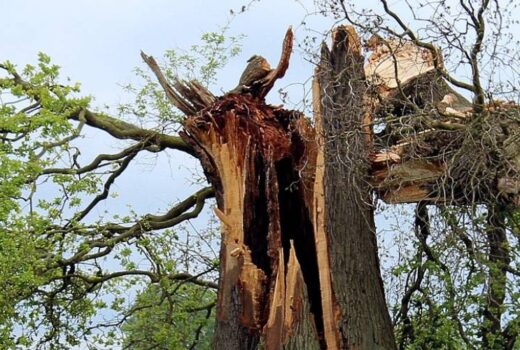As autumn settles over the South Shore of Massachusetts, the changing leaves signal a critical time for tree care. For homeowners in established communities from Hingham to Marshfield, the time is now to prepare valuable mature trees for winter’s harsh conditions. Proper fall maintenance now can prevent costly damage and ensure your trees emerge healthy in spring.
Key Takeaways
- Apply fall fertilization by mid-November for inland properties and early November for waterfront locations to avoid ground freeze while providing essential winter nutrients.
- Create protective barriers against salt damage for trees in oceanfront areas using burlap screens and anti-desiccant sprays.
- Apply 2-3 inches of organic mulch around trees, keeping it 2-6 inches away from trunks to protect roots while preventing bark damage.
- Consider tree structure and winter wind patterns when pruning to prevent storm damage, focusing on removing weak branches and thinning dense canopies.
- Contact professional arborists for complex tasks, like hazard assessment, work near structures or utilities, and any situations requiring permits or specialized equipment.
Complete Fall Tree Care for South Shore Properties
The unique Massachusetts coastal environment creates specific challenges that require targeted care strategies. The priority tasks this time of year focus on proper nutrition, root protection, and structural preparation before winter storms arrive.
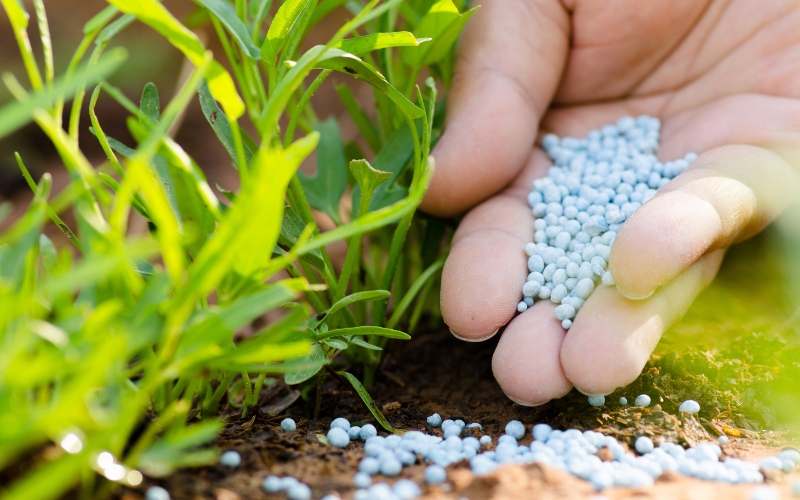
Proper fertilizer application timing is crucial for South Shore trees, with coastal properties requiring earlier application than inland areas.
Fertilize at the Right Time for Maximum Benefit
Fall fertilization provides trees with essential nutrients that support root development during winter and fuel spring growth. UMass Extension recommends applying slow-release formulas before the ground freezes.
For inland areas, you have until mid-November to complete fertilization. Waterfront properties should finish by early November due to faster soil cooling from ocean exposure. Choose fertilizers with at least 50% water-insoluble nitrogen for sustained feeding throughout winter.
Apply fertilizer evenly from the trunk to just beyond the drip line. Trees that experienced summer drought stress will particularly benefit from this nutritional support before winter dormancy.
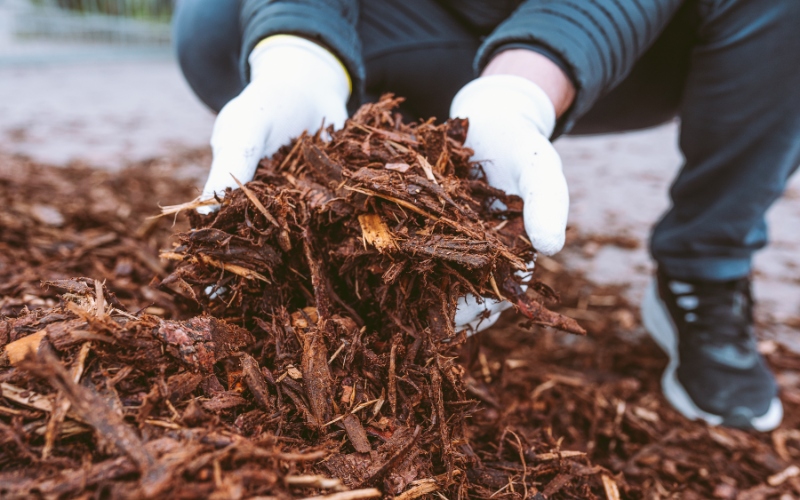
A thin layer of mulch around your trees can make a world of difference for soil health.
Apply Mulch Correctly for Root Protection
The South Shore’s predominantly sandy soils present unique mulching considerations. These soils drain quickly but also allow organic material to decompose faster than inland clay soils.
Apply a 2–4-inch layer of organic mulch around trees, extending from several inches away from the trunk to beyond the drip line. Wood chips work particularly well, as their coarse texture promotes better soil aeration while providing insulation.
Always maintain a mulch-free zone of 2-6 inches around the trunk to prevent moisture retention against bark that could lead to fungal issues.
PRO TIP: Proper mulching also helps prevent damaged bark that can occur from mower strikes and other mechanical injuries throughout the growing season.
Prevent Salt Damage with Burlap and Anti-Desiccants
Properties with ocean exposure face significant salt challenges that can damage or kill vulnerable trees. The effects are most severe in directly exposed locations, with impact diminishing as you move inland.
For valuable evergreens, install burlap screens on ocean-facing sides. The screening should extend from ground level to above the canopy and be secured to sturdy posts that can withstand strong coastal winds.
When trees cannot be screened, apply anti-desiccant sprays in December after trees enter full dormancy. These protective coatings reduce moisture loss and salt penetration, though they may require reapplication during winter thaws.
Prune for Stronger Tree Structure Before Storms
Winter storms test tree structure, particularly in areas exposed to strong winds. Strategic pruning now can significantly reduce the risk of damage.
Professional storm damage prevention pruning should focus on:
- Thinning dense canopies to reduce wind resistance
- Removing weak branch attachments vulnerable to failure
- Eliminating branches that could contact structures during high winds
While some pruning can be done now for storm preparation, major structural work is often best performed during full winter dormancy when tree biology and visibility provide optimal conditions.
“We’ve learned that coastal tree pruning is as much about understanding wind patterns and salt exposure as it is about tree biology. Properties directly facing the ocean need different strategies than those tucked into more protected coves. And timing is important – you want trees prepared before the first nor’easter, not after.” – Jeff Van Meter, Owner of Top Notch Tree
Which Fall Tree Care Tasks Require a Certified Arborist?
Some fall tree care tasks—like leaf cleanup, watering, and basic mulching—are safe for homeowners to handle, but jobs involving large trees, utilities, or structural concerns should always be left to a Certified Arborist. The right approach depends on tree size, location, and your property’s specific characteristics.
Tree Care Tasks Homeowners Can Manage Safely
Several important fall tree care tasks are suitable for homeowners to perform themselves:
- Leaf Management: Remove diseased leaves showing fungal symptoms, but healthy leaves can remain as natural mulch or be composted for garden use.
- Watering: Provide deep watering for newly planted trees before ground freeze, especially important in fast-draining sandy soils.
- Basic Mulching: Apply a 2-3 inch protective layer around trees, keeping it several inches away from trunks.
- Simple Clean-Up: Remove broken branches, old stakes or ties, and other debris that could cause problems during winter storms.
When a Certified Arborist Is Essential
Call Certified Arborists when facing:
- Large Tree Pruning: Any work requiring ladders or climbing presents significant safety risks.
- Standard Tree Removal: Tree removal is dangerous, and arborists know how to handle it safely and efficiently.
- Utility Proximity: Trees near power lines require professional equipment and safety training.
- Structural Concerns: Trees showing signs of weakness, decay, or unusual leaning need expert assessment.
- Permit Requirements: Many communities require permits for tree work, particularly in historic districts or near public ways.
- Specialized Equipment Needs: Proper pruning of mature trees often requires professional tools and techniques.
- Emergency Tree Removal: Arborists know the proper techniques for removing trees that have fallen on structures on vehicles.
Expert help is also valuable for creating custom winter protection plans for particularly valuable specimen trees or historic properties with significant tree assets.
Frequently Asked Questions About Fall Tree Care
When should I stop fertilizing trees before winter?
Stop fertilizing by mid-November for inland properties and early November for waterfront locations. The goal is to provide nutrients before ground freeze without stimulating vulnerable new growth.
What type of mulch works best for winter tree protection?
Organic mulches, like wood chips, pine bark, or composted leaves, provide ideal winter protection. Wood chips are particularly effective in sandy soils due to their slower decomposition rate and better moisture retention.
How do I protect my evergreens from salt damage?
Install burlap screens on ocean-facing sides, apply anti-desiccant sprays once trees are fully dormant, and ensure adequate fall watering. For particularly vulnerable specimens, consider temporary fencing with fine mesh to filter salt spray.
Can I prune my trees in November?
Limited pruning for hazard reduction is appropriate now, but major structural pruning is often better during full winter dormancy. During fall, only pruning obviously dangerous branches and thin dense areas to reduce winter wind resistance.
How can I tell if a tree needs professional inspection before winter?
Look for warning signs like dead branches, cracks in the trunk, fungal growth, unusual leaning, or previous storm damage. Trees near structures or showing any signs of structural weakness warrant professional assessment.
What’s the most important thing I can do for my trees this fall?
Focus on proper mulching and finishing fertilization before the ground freezes. These two tasks provide the greatest winter protection benefit with the least technical expertise required.
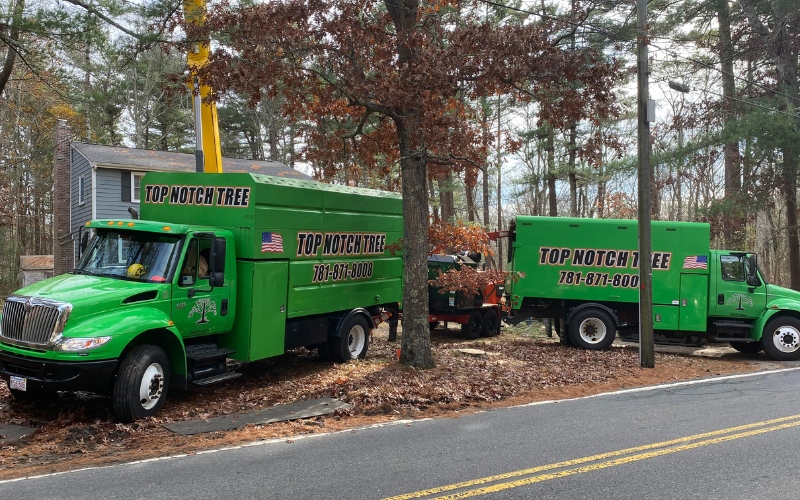
Fall and early winter provide the perfect opportunity for tree work, such as the tree removal pictured above.
Prepare Your Trees Now for a Healthy Spring with Help from Top Notch Tree
Don’t wait until winter damage occurs to think about tree care. The protective measures you implement now will determine whether your trees emerge healthy in spring or require costly remedial work.
Top Notch Tree’s ISA Certified Arborists understand the specific challenges South Shore trees face and can provide targeted care strategies for your property’s unique conditions. Whether you need expert storm preparation pruning, winter protection planning, or help with basic maintenance, we’re here to help. Call us today at 781-412-1862 or request an estimate online to ensure your trees get the professional care they need before winter arrives.


